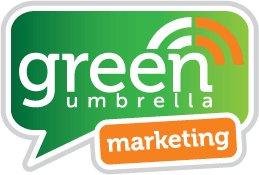Break out of your brand bubble

Break out of your brand bubble

A statement that can send many into a hypertensive meltdown, manically waving the brand manual reciting photography and copy rules and the RGB/CMYK codes whilst rocking in a corner clinging to anything ‘on brand.’
Great news – your brand is one thing; your content can be another!
Do you ever wish you could break out just a little from what seems like the restrictions of your brand? Whether it’s the look – the same package of three colours, seldom used secondary colours and gradients that everyone has a personal preference of whether it can or cannot be used, or perhaps you want to dare to venture away from the same two fonts – the fancy one you’ve paid for and the bog-standard one with its worldwide arial appeal.
Sometimes it’s not just the look of things, but the way we sound. Your brand guidelines state ‘you are a brand that takes a formal approach to your tone of voice’, but you’d like to see if you’re the type of brand who’d benefit from a more conversational approach. Sometimes we just want to have fun and get involved in other people’s online antics – not just be a company that does x, y and z.
Your approach to content marketing doesn’t always have to include the usual signifiers of your brand. Your traditional brand colours may not suit the topic you are discussing, using full-colour imagery instead of your usual black and white on your social media channel might draw more attention and video doesn’t have to be the expensive, high gloss finish every time.
How are others breaking out of their brand bubble?
We are so bombarded with branded messages, that businesses are moving towards unbranded content.
This type of content is rich, sharable and designed to engage and entertain via stories or insight, without making obvious links to brand or the product it represents. It’s a daring approach though, to spend time and effort creating something that does not have the obvious signifiers of your brand and what you’re trying to promote.
American home brand, Bed, Bath and Beyond’s ‘One more thing’ blog and worldwide consumer-goods company Unilever’s ‘Babycenter’ blogs are in response to their customers’ needs. Recognising that their customers wanted more than being bombarded by the products themselves, the brands compile useful lifestyle hacks and articles on current events and trends into one place with little to no reference of their brand logo or any reference to their products.
Take a look at any of the social media channels for Netflix, and you’ll see that their tone of voice is akin to two friends sitting on a sofa, discussing the merits of their favourite TV shows. They don’t tell you to watch the latest programme that will stream from Friday, they suggest that you could watch it if you like that sort of thing, but if you don’t – no biggie.
There are even times when you might be discussing a sensitive subject or showing the emotional side of your product or service from a customer perspective, where it just doesn’t feel appropriate to slap your logo all over it. At times, branded content can give the impression that it is product driven, unbranded is expert-led, engaging, topical and useful. Hillary’s Blinds worked with the Sleep Foundation to produce a Lost Sleep Calculator, an interactive tool that users could gauge how much sleep they lost of a week or month and the impact it could have on them. It achieved over 40 links and 500 shares across Facebook, Twitter and LinkedIn and all with minimal branding. And not one single mention of their brand or the fact that they sell a range of light-reducing window blinds to support a good night’s sleep.
Un-branded content is about adding value, sparking curiosity or bringing an emotional side and, prepare brand manual wavers… taking a risk.
Now, before you – or the person you need to convince of these little changes breaks into a sweat – there’s a pointer below that might put you or them at ease.

There’s always room for playtime
The good news is that for a lot of companies (unless you’re one of the big brand powerhouses) you are relatively unknown, and you have some freedom to test content ideas without a worldwide media backlash.
Yes, you have your standing in your industry with that feeling that everything you’re doing is being watched and judged…. But really, is it? Do you spend all your time looking at all your competitors’ every single marketing move?
Sometimes we’re genetically inclined to remember that one person (who really doesn’t have much sway in the world) that made a comment about something we did, four years ago or the campaign that fell a bit flat. The best thing is to remember is: we’re a fast world, content and ideas move on quickly. So, if you’re attempting something a little different that doesn’t have the response you wanted, use the experience as a learning curve and try something else. Don’t let negative @random_complainer with 12 followers or @jealous_competitor #whomissedagreatidea disrupt the creativity you could unleash!
Pop!
When considering your content, ask yourself: How much of your brand needs to be used on this particular piece? Have a test run, why not take something you’ve already produced and strip it of its brand attributes to see how it works without it – do you get to your video content sooner without having the logo at the beginning, does that article look insightful rather than sales-led?
So give it a go, break out of the brand bubble and see where it takes you!

All round marketing and comms person by day in a steady job, all-round marketing and comms person by night with side project ‘Content Cake.’ Whilst also fitting in responsibilities as a wife, mother, daughter, sister, friend, coffee drinker and cake eater. No pets… We don’t have time for pets.
Share this!

